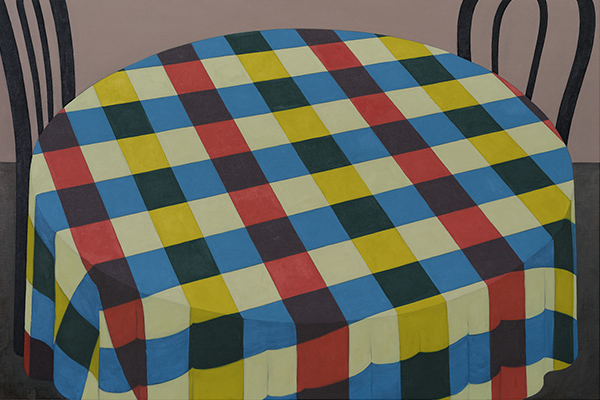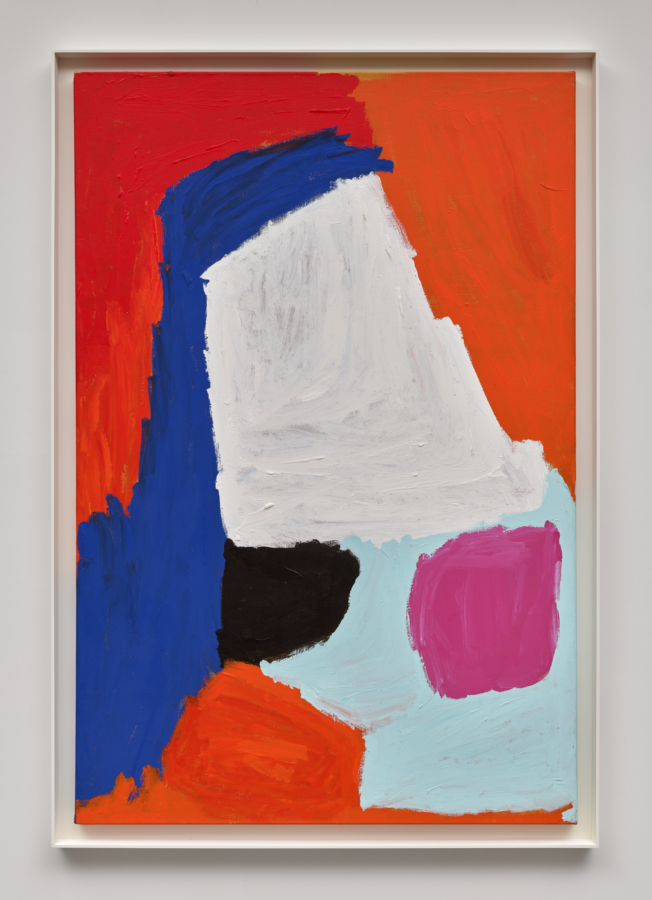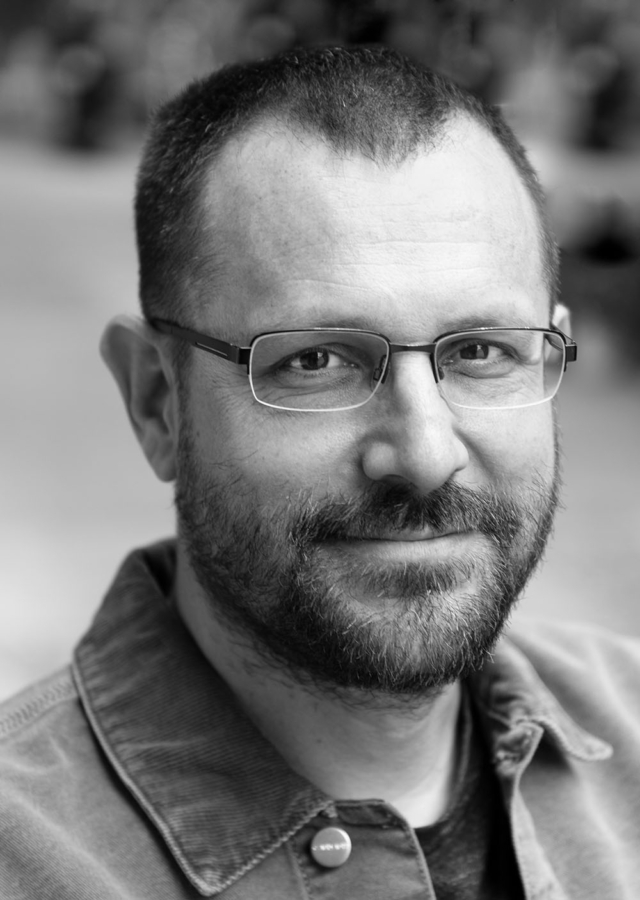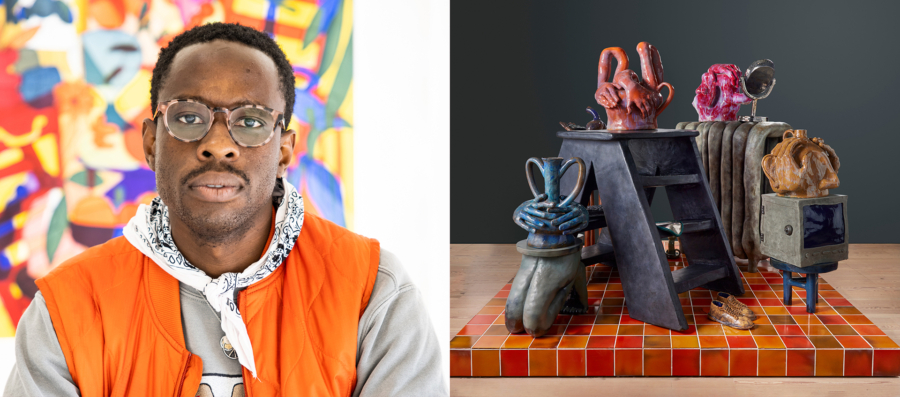Ann Craven, published by Karma, New York, 2018.
Download as PDF
Ann Craven is available here
“The reflection of a sunset speaks loudly of days.” —Agnes Martin
Invariably Ann Craven works in her studio while listening to music, often playing every cover she can find of an old classic or a familiar album over and over again. This routine corresponds with her visual practice of repainting key subjects again and again, sometimes even duplicating entire installations. Critical assessments of her work have interpreted her penchant for reproduction as a paean to Pop Art or a Conceptual system designed to subvert the marketplace. And those theories may well be valid, but I would argue that Craven’s use of repetition is as much about the deeply personal task of measuring time and preserving memory as it is about the capital-letter movements of art history. Unlike most artists following in Andy Warhol’s wake, Craven tackles the thorny issue of original/copy using oil and brush rather than the mechanical tools of camera, printer, or Photoshop. And the conceptual frameworks she establishes draw on the inner workings of our limbic system and the vast rhythms of the cosmos rather than mathematical or linguistic constructs. Craven returns to the same core images as a self-appointed challenge and she revels in the minor distinctions and subtle inflections from one painting to the next. They are akin to cover versions of a song or memories replayed over in our minds, the same but different each time.
In 1999, during the Thanksgiving holiday, a fire swept through Craven’s New York studio and laid waste to almost all of her existing work, her personal belongings, and her photographic documentation. It took more than a year for Craven to recover from the devastation and when she did she began by repainting, almost entirely from memory, some of her destroyed works. Like prized Roman replicas of vanished Greek sculptures, they were copies of lost originals. These resuscitated paintings of idyllic fawns, birds, and flowers restored the foundation upon which Craven’s later works would rest. The brilliantly hued canvases have the energy and immediacy of life happening right now and Craven’s wet-on-wet brushstrokes describe the texture of feather, fur, and petal with aching softness. Craven exhibited these works in 2002 at Klemens Gasser & Tanja Grunert and then two years later re- created that same show with freshly painted works of the same images, hung in their same respective locations at the same gallery. For viewers who saw both shows the effect was uncanny—a momentary shock of recognition followed by uncertainty. The works were not the same; Craven had remade them in a larger scale, like rerecording a song in a different key. The remembrance of the earlier show might then be distorted or superseded by the newer mental picture, thus demonstrating across the two-year cycle of shows just how fallible, inconstant, and evolving human memory can be. After all, what are memories if not imprecise reproductions?
In addition to addressing the fleeting nature of memory, Craven’s works encapsulate other layers of ephemerality. Her animals are always sourced from mediated imagery, frequently originating in old postcards she collects, travel souvenirs, and out-of-print ornithology books. The 1970s kitsch aesthetic that characterizes many of these selections conveys a reflexive nostalgia. The animals even appear to perceive the threat of their own obsolescence, their movements frozen as they assess us with the monocular vision typical of prey. The deer pictured in Dear in Daisies (1998) was lifted from a scene in the 1973 post-apocalyptic movie Soylent Green, in which an elder character watches a film montage of nature’s most iconic scenery—setting suns, schools of fish, waterfalls—as he is being euthanized. The natural world as it is shown in the footage is extinct, but the visual reminder, the proof of its prior life, enables a peaceful deathbed experience. Works such as Dear in Daisies probe the nature of memory while throwing open the question of whether the nature we remember even still exists.
Craven modeled the African grey parrot in her triptych Hello, Hello, Hello, 2002 after an image from Caged Birds in Color, a reference book she found in her grandparents’ cellar. In 2004 she painted another version of the triptych, HELLO, HELLO, HELLO, 2004, and did so again with Hello, Hello, Hello, 2013. Craven changed the scale and proportion of the canvases for each round, and the exact intra-relationships between the birds of each triptych, or the inter-relationships between the nine birds, pose a mystery. Are her avian characters best described as copies, doubles, spawn, clones, ghosts, replicants, or derivatives? The parrot parroting itself? In fact, they are all created from scans of the same catalyzing image, the three panels of each triptych painted at the same time with one area painted on one, then the next, and then the third. As Craven explained, “It’s almost performative as one brushstroke is repeated and makes your body move to the next to try and hold on to that motion and get it done fast.” The test for Craven is not just to convey the sense of a fragile life before us but also to capture the momentary gestures of her own body. The variations from one canvas to the next are the result of different motions of her hand, shifts in atmospheric contexts, and adjustments in Craven’s mind-frame over the course of minutes, and then years. No artist can step into the same stream of consciousness twice, after all. In 2014 Craven installed all nine of these paintings at Le Confort Moderne, in Poitiers, France, in a black room typically used for musical performances. The resulting sensation of visual and auditory ricochets was entirely intentional. “I thought of them silently echoing and repeating in this sound chamber that has so much history,” she explained.
For a self-reflexive artist such as Craven the moon is a natural choice of subject; its glow is a memory of sunlight that has already illuminated a faraway place. Craven’s first gallery show in 1995 consisted of 101 paintings of the moon and she continues to revisit that well of imagery. Like her animals, her moons seem to be assessing us, but unlike her animals there is no threat of obsolescence and she pointedly describes these paintings as a “continuum,” rather than the more finite term “series.” In 2006 Craven presented two concurrent gallery exhibitions, one in New York at Klemens Gasser & Tanja Grunert, which was composed of 400 moon paintings made en plein air, and the other at the Contemporary Art Center in Cincinnati, which presented 400 paintings Craven copied in her studio from the first 400. The two shows are the original and the copy, the sun’s light and the moon’s reflection. Viewing either of these gallery shows a visitor would have presumably been aware that hundreds of miles away, another person was likely looking at the (almost) same moons. This sense of universality and timelessness was crucial to Craven: “To know that my mother or father looked at the moon many times feels hopeful. The moon becomes a way to connect to a memory that fades as time goes on. It allows the memory to remain, and the remembrance continues to become deeper.” The physical distance between her simultaneous moon presentations is related but different from the temporal distance Craven created between her replicated presentations of 2002 and 2004. If the two Klemmens Gasser & Tanja Grunert shows created an echo, the two moon presentations created a mirror.
With the certainty of gravity, each night the moon provides opportunities for both surprise and familiarity, making it an ideal subject for Craven’s cyclical way of working. As a grouping, her lunar paintings demonstrate the infinite variability of the moon’s showings, as well as the infinite descriptive possibilities of oil paint in Craven’s hands. Across the hundreds of moon paintings she has made, every hue is rep-resented, defying any expectations for consistency in the night sky. Her moon paintings made from direct observation are always painted on 14 × 14 inch canvases and titled with the date, time, and place in which she painted them. They are an empirical document of not only the moon’s presence at that moment, but her own. In this way they recall On Kawara’s Today series of paintings, which had a similar agenda of affirming his existence in this world. Like Kawara’s paintings, each of Craven’s moon paintings insist “I was here,” on this particular day in this particular place. But when shown en masse and in chronological order as the artist often installs them, her works also encapsulate the larger diurnal and seasonal rhythms that underlie our universe.
Craven establishes other systems in her practice, notably her canvases of wobbly diagonal stripes that she makes from leftover paint after finishing a representational work. She calls these her “band paintings” and their distillation of content into abstraction is reminiscent of Agnes Martin’s work. A favorite artist of Craven’s, Martin once said, “There’s no indication or hint about the material world in my painting. No, I don’t paint about the world. Everybody else is paint-ing about the world. That’s enough. I am simply painting concrete representation of abstract emotions such as innocent love, ordinary happiness.” Martin’s ideal was to paint with an untroubled mind, devoid of conscious thought. Disassembling her flora and fauna into mixed-color bands was Craven’s method of painting with an untroubled mind and without a hint of the material world. “Because I have painted with oils (from observation) since a child, with the colors on the palette laid out for mixing in the same order forever, the mixed color is like a non-thought—it’s like breathing for me—it just occurs because it’s supposed to. Meaning I mix color with the same innate sensibility as I use to walk or breathe,” she explained. The “band paintings” allow Craven to see clearly the colors she can only feel while mixing. Related to the bands are Craven’s “palette paintings,” the cheap canvases on which she deftly mixes her paints, kept so that she can precisely replicate the hues when needed. They are indexes of her artistic process and mnemonic aids, like breadcrumbs that she can trace backwards later. As she explained, “They are an innocent by-stander to the memory of what was painted.” With their unfettered notations, quick iconographic symbols, and vibrant globs of color they often resemble a Cy Twombly painting, filled with pentimenti, erasures, and paint straight from the tube. Twombly too was preoccupied for most of his career with notions of memory, the ephemeral, and, as he put it, “a deeply aesthetic sense of eroded or ancient surfaces of time.”
Although Craven’s first love is oil paint, in 2007 and 2008 she made a stirring series of watercolor pansies while in residency in Reims, France. Watercolor seemed a fitting medium to capture the delicate flowers, as Craven explained: “[Watercolors] are so forgiving if you have the guts to leave it alone and let it do its thing. If you control it it becomes a tight survey of exactitude, if you leave it to bleed and move and blur out on its own, it becomes its own life that you can’t contain.” Most of the works possess the same hazy, all-over quality of the floral backdrops in her bird paintings, with the edges of the pansies dissolving into the ground. And many of the compositions are anchored towards the bottom by the bright counterpoint of a second, white bloom described primarily by paper left bare. In French the pansy is called a pensèe, so named because it resembles a pensive human face. Craven’s book reproducing all 91 of her flowers is not just a diary of her production but a crystallization of each of the fluid and unpredictable interactions of her hand, paper, and watercolor. It is a tender bouquet of pensèes in both senses of the word, as blossoms and as a timeline of her recollections. In 2010, five years after her mother passed away, Craven initiated a series of grisaille paintings from her memory of the roses at the funeral service. She positioned the vase of flowers seated upon a stool in front of one of her bird paintings, like a setting-up portrait. As far back as Pliny the Elder, it has been theorized that art is a way to memorialize the things we feel we are about to lose, a way to hold onto them. By fixing these roses in paint Craven prevents them—and by transference her mother’s memory—from ever disappearing. She presented these rose portraits in a two-room installation at Maccarone Gallery, one room containing nine paintings, the other room showing nine nearly identical paintings hung in reverse orientation. Craven had collapsed the distances of time and space that had separated her previous doubled presentations, as if to bend back the arc of time or press rewind.
Each new work Craven makes contains not only the seed of the next work to come but the vestiges of its antecedents. As such, her looping cycles of interconnected works are best understood cumulatively and reward a sustained loyalty. Craven is playing the long game, which requires supreme patience, fierce independence, and an unshakeable inner faith. One has a sense, though, that Craven’s primary audience is herself. Her works, while jubilant explorations of her chosen medium, serve as a bulwark against loss. They are attempts to capture forever that which is short-lived and fleeting—the moon as just seen, the paint as just mixed, and the memory as just recalled. Craven’s term for this is “the continuous just past.” Her paintings can be read as melancholy elegies to those she has lost and gentle warnings about the transience of life as we know it. And yet, as viewers we still look ahead, anticipating the next round of her work. We know that her most recent body of work has yet to reveal its full poignancy and may not complete its orbit for many years to come. And it is in these distances between her reprised series, between one installation and the next, between original and copy, that the intellectual heft of her project lies. And it is in the differences between brushstrokes, dimensions, color mixes, and the exquisite traces of Craven’s hand, that the heart of her project reverberates. No two moons are ever the same, no two brushstrokes are ever the same, no two chords are ever the same, and no two remembrances are ever the same. As Craven wrote recently, “I imagine my work to be silent repeated songs with all the baggage and vulnerability that comes with it.”
Published by Karma Books, New York
Edition of 1,000
Special edition of 100



